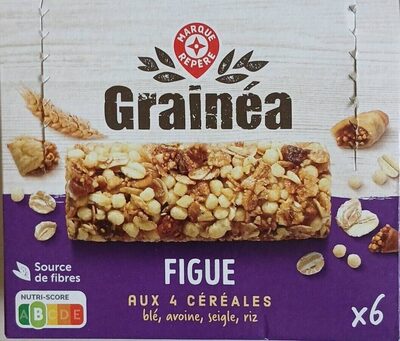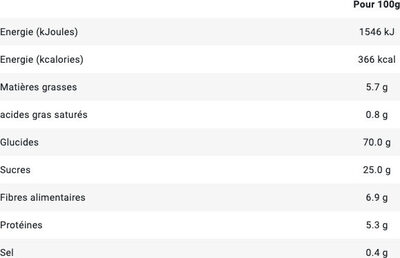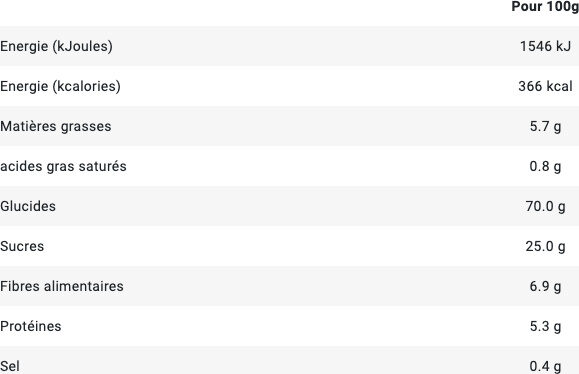Barre aux 4 céréales et figue - Grainéa Marque Repère - 126 gr
Barcode: 3564706617520 (EAN / EAN-13)
Common name: Barres céréales à la figue
Quantity: 126 gr
Packaging: Cardboard, fr:Etui en carton, fr:Film Plastique, fr:Sachet en plastique
Brands: Grainéa Marque Repère
Categories: Snacks, Barres, Barres de céréales, Barres de céréales aux fruits, Snacks sucrés, Barres de céréales à la figue, Barres-de-cereales, Snacks-sucres
Labels, certifications, awards: Nutriscore, Nutriscore Grade B
Origin of the product and/or its ingredients: U.E et non U.E
Origin of ingredients: France
Manufacturing or processing places: France, Union Européenne, Union Non Européenne
Traceability code: EE 04-21 EÜ
Link to the product page on the official site of the producer: www.marquerepere.leclerc
Stores: E.leclerc
Countries where sold: France
Matching with your preferences
Report a problem
Data sources
Product added on by kiliweb
Last edit of product page on by kiliweb.
Product page also edited by additives-app-chakib, dorado-jerome, feat, foodvisor, moncoachigbas, openfoodfacts-contributors, packbot, roboto-app, sasa, sebleouf, teolemon, trantre, yuka.sY2b0xO6T85zoF3NwEKvlhFuDMqGmQz5CDXRwG-rwcyLcJvmRdBQuoKqF6s, yuka.sY2b0xO6T85zoF3NwEKvlk5AYdmCiwvpGgfTo0mu7OqULqLpa-pT8Izlbqs, yuka.sY2b0xO6T85zoF3NwEKvlmFmaPXskG2dbBLfunW5mIuKI5PCbu5807Ogbao.













